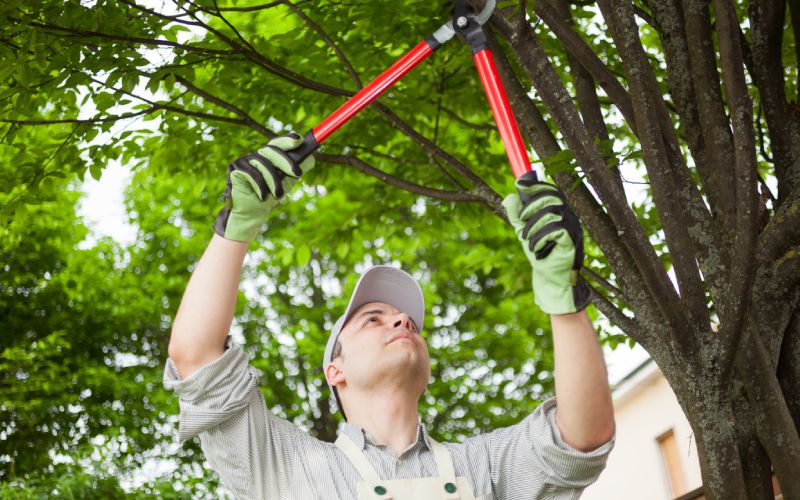Many gardening tasks have become easier with technological advances, but tree pruning is not one of them. Pruning trees requires patience, physical effort and most of all, knowledge. But don’t let that put you off: pruned trees grow better, look healthier and bear more fruit, so it’s well worth the effort.
IS TREE PRUNING NECESSARY?
As tree pruning is quite a tough job, you may ask whether it is really essential. The answer is yes and no: trees can survive without pruning, but good pruning makes them grow better and produce more blossoms and fruit. Pruning also allows you to play a bigger part in the architecture of your garden, by shaping shrubs and trees and keeping them under control. Try it, and you’ll notice that a few hours’ work makes an amazing difference to your garden, both now and next year.
GENERAL TREE TRIMMING TIPS
It’s almost always best to trim or prune a tree during its dormant season. Although you can technically prune a pine tree at any time, it is still better to do so when it is dormant. The only exception is when a hazard exists.
Be conscientious about the size of the branch that you are going to remove. If it is less than 2 inches in diameter, removing it is fine. If it is between 2 and 4 inches in diameter, you might not want to do it. If the branch is more than 4 inches in diameter, you should only do so if you have a really good reason and better call a certified arborist.
Only trim branches that have weak, V-shaped, narrow angles. Retain branches that have strong, U-shaped angles.
TREE PRUNING TECHNIQUES
There are several general approaches to pruning, each for a specific purpose. Learning the right methods to pruning is the 1st step in keeping your trees healthy and helping them live a long life.
Cleaning is removing dead, diseased or weak branches from the crown of a tree.
Thinning is removing branches to allow more light to penetrate, reducing stress on heavy limbs and encouraging retention of the tree’s natural shape, removing crossing branches that may rub on each other.
Raising is removing lower branches to provide clearings for buildings, vehicles, pedestrians and views.
Reduction is cutting back tree limbs to reduce the size of the tree and make room for utility lines.
MAKING THE CUT
Select a spot about 3 inches from the collar of the branch (the thickened, collar-like place where the parent and child limb intersect) and make a cut about 1/3 of the way through the branch. This will prevent the branch, when severed, from tearing through the collar or the parent branch and harming future growth. Make this first cut on the underside of the limb.
Cut slightly beyond this first slice and cut straight through the branch to be removed then make a final cut through the remaining portion of the branch, as near to the collar as possible, without touching the collar itself.
HOW TO PRUNE A MAPLE TREE
Maples trimmed at certain times of the year will “bleed” or drip from the pruning cuts. Bleeding is most likely to occur when Maples are prunied in the seasons just before and right after winter. Studies indicate that “bleeding” doesn’t hurt the tree, so it becomes more of a cosmetic issue. If you want to prune Maples without bleeding, it must be pruned when it is fully dormant in the middle of winter or during late spring/summer when its leaves are in fully.
HOW TO PRUNE A DOGWOOD TREE
If you trim Dogwoods in April or May, it will make them more susceptible to the dogwood borer. This insect severely damages the vascular system of the tree after boring into the trunk.
How to Prune an Oak Tree
Oaks should be not be trimmed from April thru October due to the prevalence of Oak Wilt disease. These pathogens that may be present during those times and a beautiful Oak is one tree you want to keep healthy.
WHEN TO CALL IN AN EXPERT
If you’re inexperienced using the tools needed for the job that must be done it may be time to call a professional arborist. Tree pruning is more about what you can reach from the ground and one fall from a ladder or high up in a tree would be well worth having an arborist take care of the job for you.

